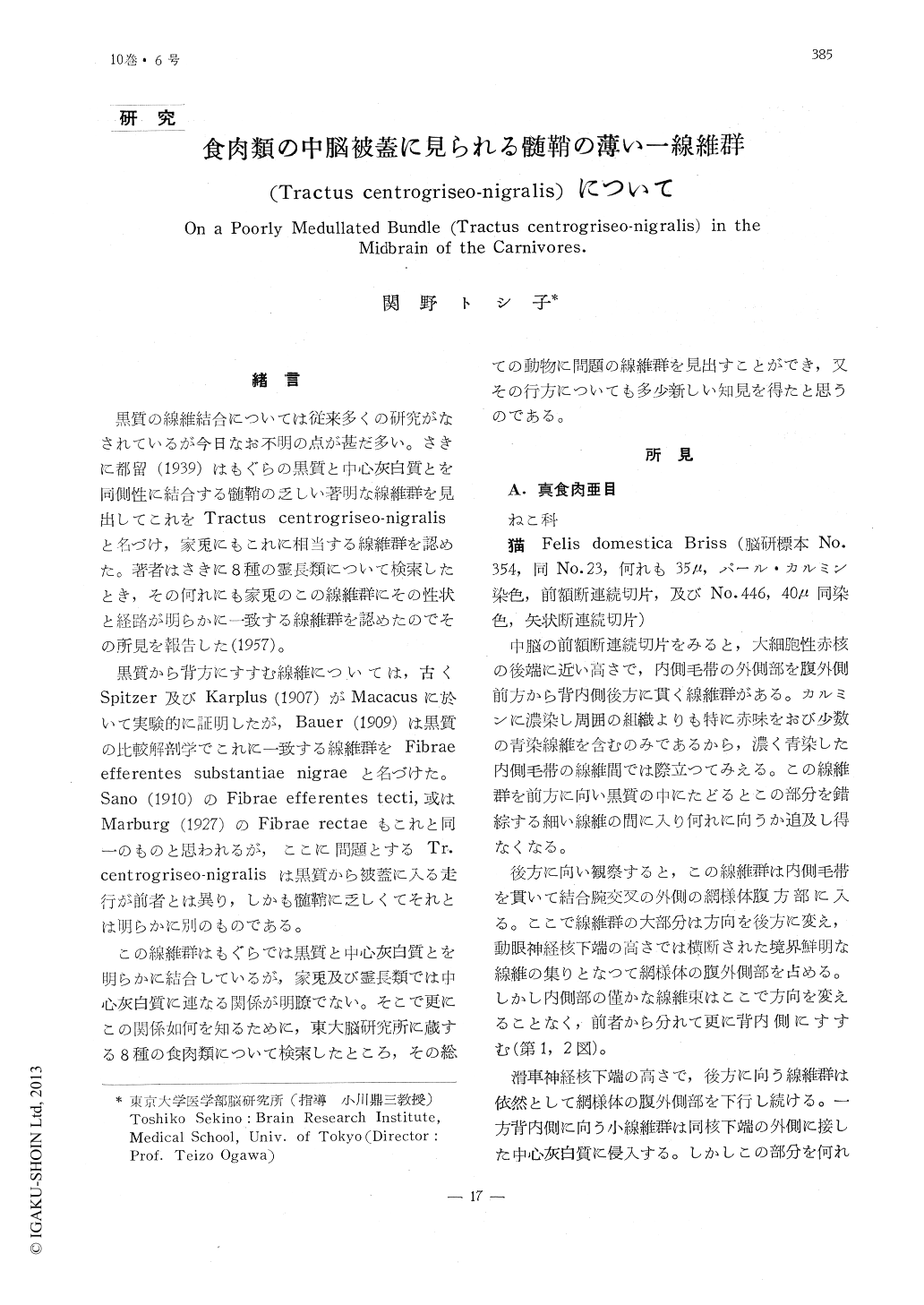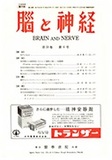Japanese
English
- 有料閲覧
- Abstract 文献概要
- 1ページ目 Look Inside
緒言
黒質の線維結合については従来多くの研究がなされているが今日なお不明の点が甚だ多い。さきに都留(1939)はもぐらの黒質と中心灰白質とを同側性に結合する髄鞘の乏しい著明な線維群を見出してこれをTractus centrogriseo-nigralisと名づけ,家兎にもこれに相当する線維群を認めた。著者はさきに8種の霊長類について検索したとき,その何れにも家兎のこの線維群にその性状と経路が明らかに一致する線維群を認めたのでその所見を報告した(1957)。
黒質から背方にすすむ線維については,古くSpitzer及びKarplus (1907)がMacacusに於いて実験的に証明したが,Bauer (1909)は黒質の比較解剖学でこれに一致する線維群をFibraeefferentes substantiae nigraeと名づけた。Sano (1910)のFibrae efferentes tecti,或はMarburg (1927)のFibrae rectaeもこれと同一のものと思われるが,ここに問題とするTr. centrogriseo-nigralisは黒質から被蓋に入る走行が前者とは異り,しかも髄鞘に乏しくてそれとは明らかに別のものである。
The author studied the tractus centrogriseo-nigralis (named so by Tsuru 1939 in the mo-le and the rabbit) in eight kinds of the car-nivores upon serial sections stained by Pal-carmin method.
The bundle in question is found in the mid-brain of all the animals examined, and is characterized by very weak myelinisation and by remarkable stainability to carmine. It pa-sses always through the lateral region of the medial lemniscus approximately at the level of the caudal end of the magnocellular red nucleus. In all of the animals studied except Canis familiaris and Nyctereutes procyonoides this group of fibers is divided into two bran-ches, one going dorsomedially and another bending caudally. A part of the former is traceable to the central gray substance at the level of the trochlear nucleus in Felis dome-tica, Canis familiaris, and Mustela melampus, though most of the fibres become undisting-uishable on the way, as Tsuru mentioned the same situation in the rabbit. The latter branch goes downwards and disappears in the reticular formation at the level of the caudal colliculus.

Copyright © 1958, Igaku-Shoin Ltd. All rights reserved.


